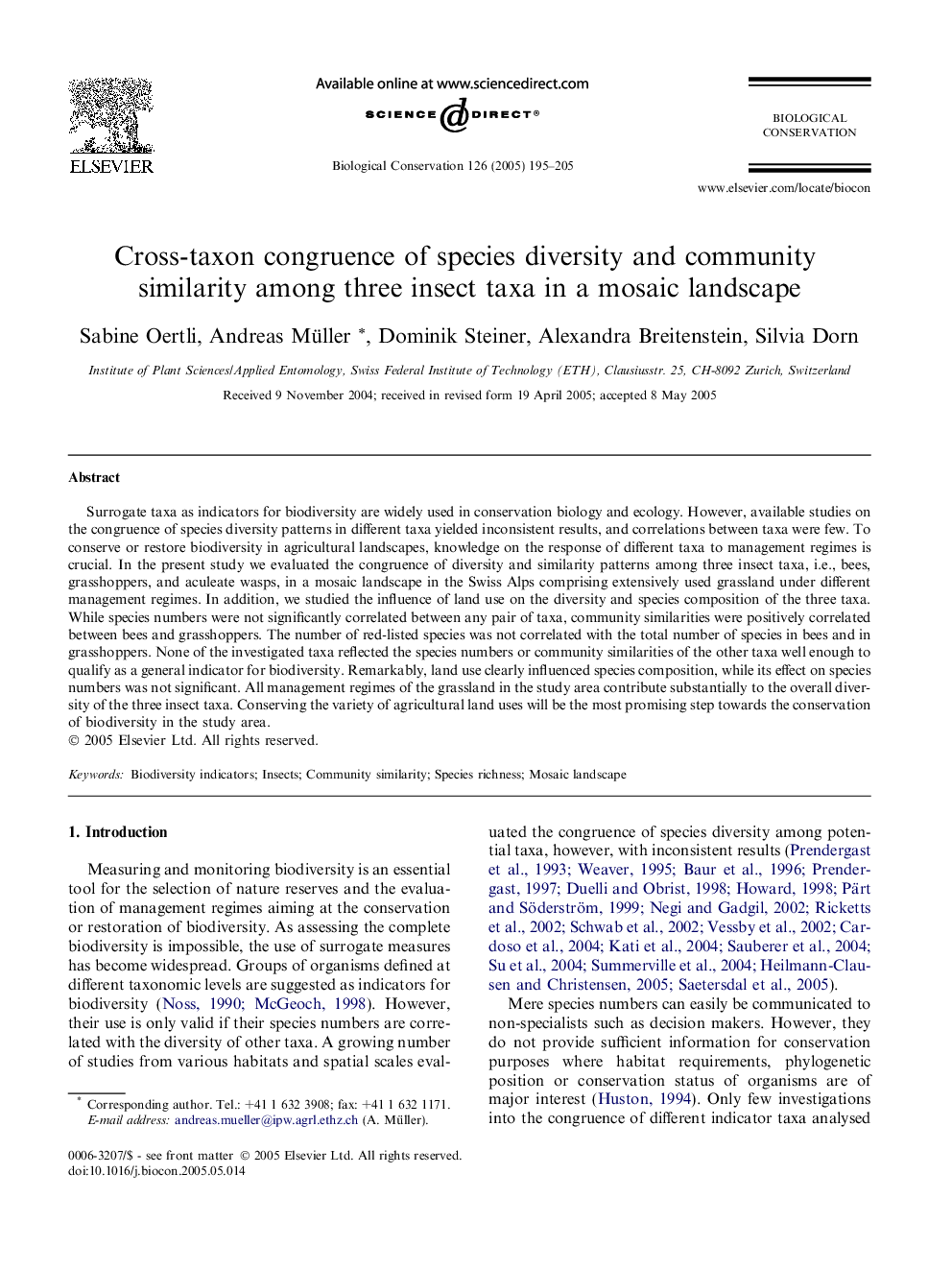| Article ID | Journal | Published Year | Pages | File Type |
|---|---|---|---|---|
| 9446033 | Biological Conservation | 2005 | 11 Pages |
Abstract
Surrogate taxa as indicators for biodiversity are widely used in conservation biology and ecology. However, available studies on the congruence of species diversity patterns in different taxa yielded inconsistent results, and correlations between taxa were few. To conserve or restore biodiversity in agricultural landscapes, knowledge on the response of different taxa to management regimes is crucial. In the present study we evaluated the congruence of diversity and similarity patterns among three insect taxa, i.e., bees, grasshoppers, and aculeate wasps, in a mosaic landscape in the Swiss Alps comprising extensively used grassland under different management regimes. In addition, we studied the influence of land use on the diversity and species composition of the three taxa. While species numbers were not significantly correlated between any pair of taxa, community similarities were positively correlated between bees and grasshoppers. The number of red-listed species was not correlated with the total number of species in bees and in grasshoppers. None of the investigated taxa reflected the species numbers or community similarities of the other taxa well enough to qualify as a general indicator for biodiversity. Remarkably, land use clearly influenced species composition, while its effect on species numbers was not significant. All management regimes of the grassland in the study area contribute substantially to the overall diversity of the three insect taxa. Conserving the variety of agricultural land uses will be the most promising step towards the conservation of biodiversity in the study area.
Related Topics
Life Sciences
Agricultural and Biological Sciences
Ecology, Evolution, Behavior and Systematics
Authors
Sabine Oertli, Andreas Müller, Dominik Steiner, Alexandra Breitenstein, Silvia Dorn,
